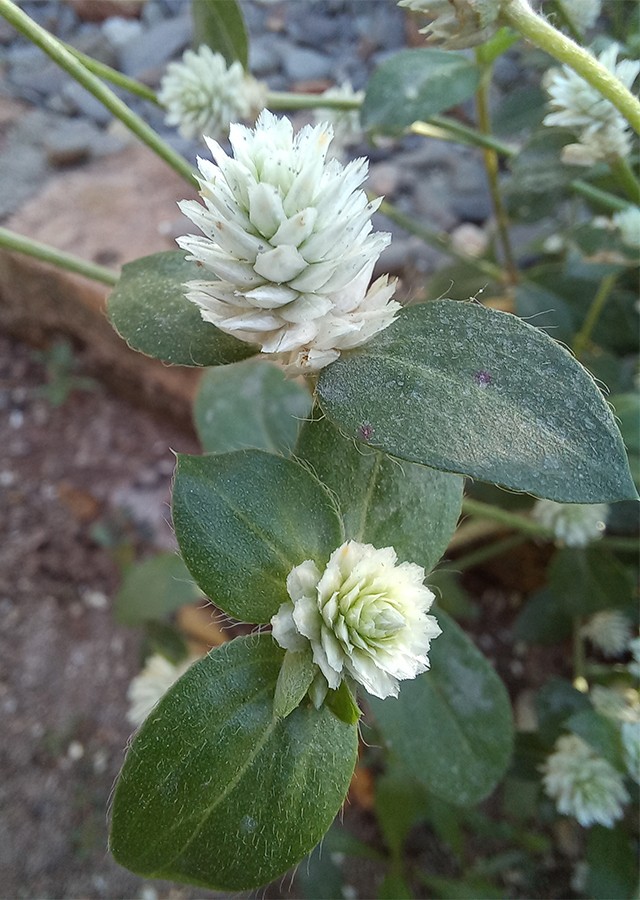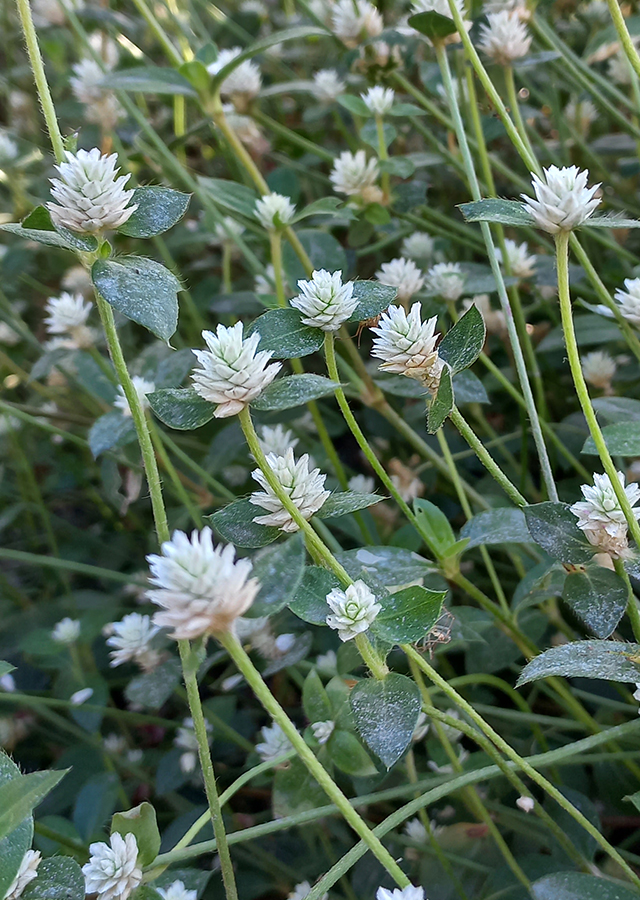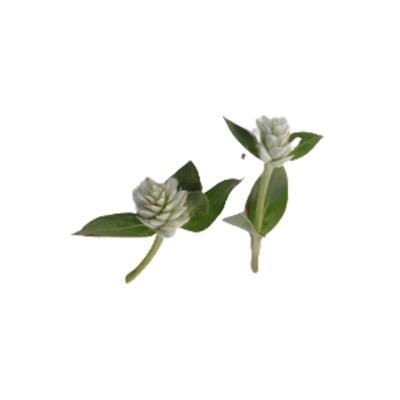Prostrate Gomphrena
Gomphrena serrata L.
Amaranthaceae
Location in our garden
Principal



Synonym
Achyranthes ternata Host ex Fisch., C.A.Mey. & Avé-Lall.
Amaranthoides decumbens (Jacq.) M.Gómez
Celosia decumbens Moq.
Habitus
Herbaceous. A herbaceous annual to perennial plant, growing 20-50 cm tall
Part Used
Leaves
The Whole Plant
Growing Requirements
Full Sunshine
Habitat
Roadside
Grassland
Terrestrial
Overview
Gomphrena serrata is native to the Americas. The precise limits of its native range in the Americas are not well defined as it has been introduced to countries in North and South America outside of its native range. It has also been introduced in India and Guam. It is a common weed of disturbed places and is reported growing in corn crops in Mexico, and is reported invasive in India, Guam and Ecuador.
Vernacular Names
Amor de soltero (Spanish), Perpétua (Brazilian), Camarún (Nicaraguan).
Agroecology
Gomphrena serrata can be found growing on lawns, roadsides, cultivated land, orchards sandy open areas, woodlands, hammocks and in gardens, from sea level to 2,400 m. It can grow on sandy soils, black clay soil with a limestone bed, hardened sandy limestone soils, on coastal dunes, on salty soils, and well-drained soil in full sun. Add grit to clay soil to improve drainage. Tolerates heat and moderate drought but performs better with regular water in summer. Soil pH is acid, alkaline, and neutral.
Morphology
- Roots - fibrous, rooting at lower nodes and internodes, usually forming a dense mat.
- Stems - prostrate, procumbent, or decumbent, pilose.
- Leaves - sessile or petiolate; petiole to 0.6 cm; blade green, obovate to oblong, 1.5-7.5 × 0.5-2.5 cm, apex rounded or obtuse, pilose-sericeous.
- Flowers - inflorescences heads white tinged with pink or red, globose to short-cylindric, 9-13 mm diameter, bractlets with denticulate crests along keel. Flowers are tube densely lanate; perianth lobes white, narrowly oblong, 4-5 mm, apex attenuate.
- Fruit - an utricle, ovoid, 2.2 mm, apex acute.
- Seeds - 1.2 mm.
Cultivation
Generative propagation is by seed. Sow at 15-18 °C in early spring. Plant out after danger of frost has passed. Can be sowed in situ after last frost date.
Chemical Constituents
Flavonoids, alkaloids, saponins, tannins, amino acids, glycosides, phenolics (oleuropein), terpenoids, and phytosterols.
Traditional Medicinal Uses
- All parts of G. serrata are used in India to treat a variety of conditions, including asthma, diarrhoea, piles, hay fever, carminative, diabetes, dermatitis and allergies.
- The extracts were shown to have anti-microbial, anti-inflammatory, analgesic, anticancer and antioxidant activities.
Part Used
Reference Sources
- Babu, G., Anju, P., Biju, C.R., and Rajapandi, R. (2012). Phytochemical screening of Gomphrena serrata L. Journal of Chemical and Pharmaceutical Research, 2012, 4(7):3396-3399.
- CABI. (2017). Gomphrena serrata (arrasa con todo). https://www.cabi.org/isc/datasheet/120122. 08-12-2021.
- Flowers of India. (No date). Prostrate Gomphrena. http://www.flowersofindia.net/catalog/slides/Prostrate%20Gomphrena.html. 08-12-2021.
- Kew Royal Botanical Garden. (2021). Plants of the World Online: Gomphrena serrata L. http://powo.science.kew.org/taxon/urn:lsid:ipni.org:names:112097-2. 08-12-2021.
- Nandini K.N., Palaksha M.N., and Gnanasekaran D. (2018). A Review of Gomphrena serrata. International Journal of Science and Reseach Metodhology. Dept.of Pharmacology, Bharathi college of Pharmacy, Bharathi Nagara 571422. http://ijsrm.humanjournals.com/wp-content/uploads/2018/12/8.Nandini-K-N-Palaksha-M-N-Gnanasekaran-D.pdf
- Shoot gardening. (2021). Gomphrena serrata (Arrasa con todo). https://www.shootgardening.co.uk/plant/gomphrena-serrata. 08-12-2021.



